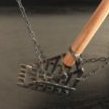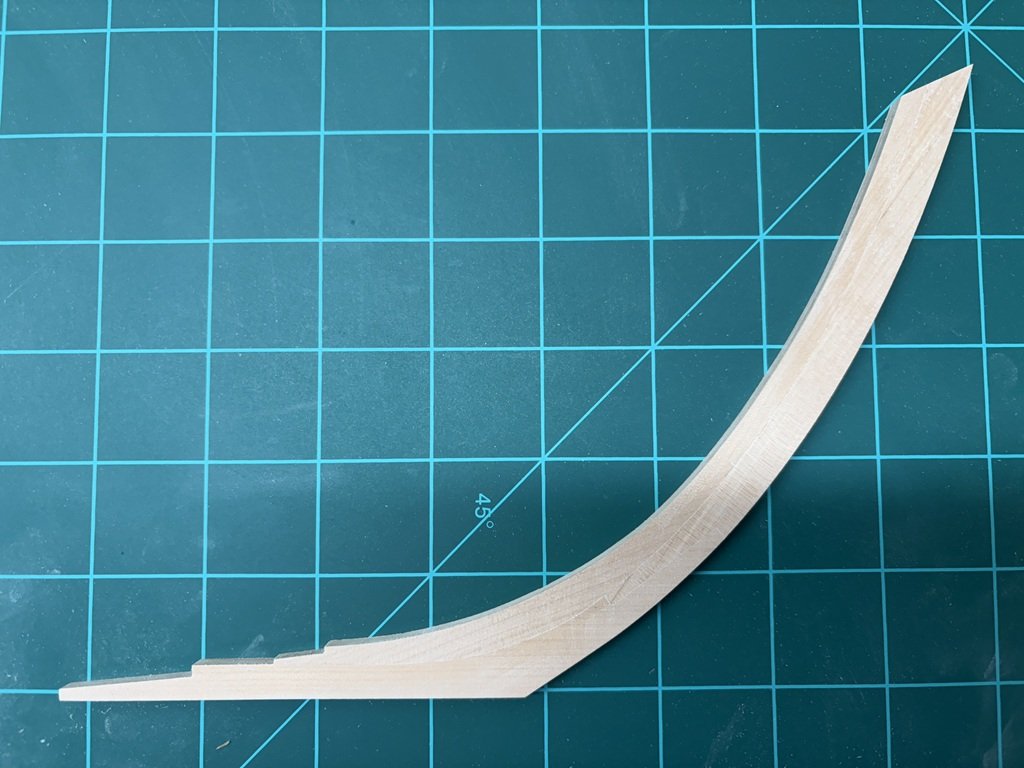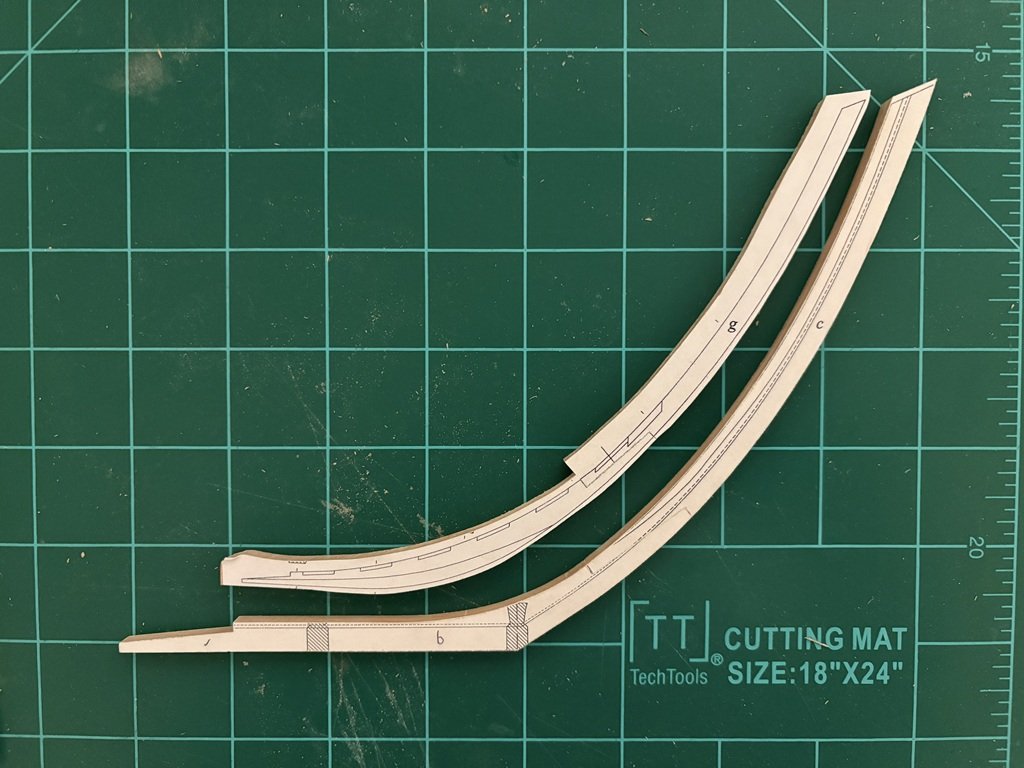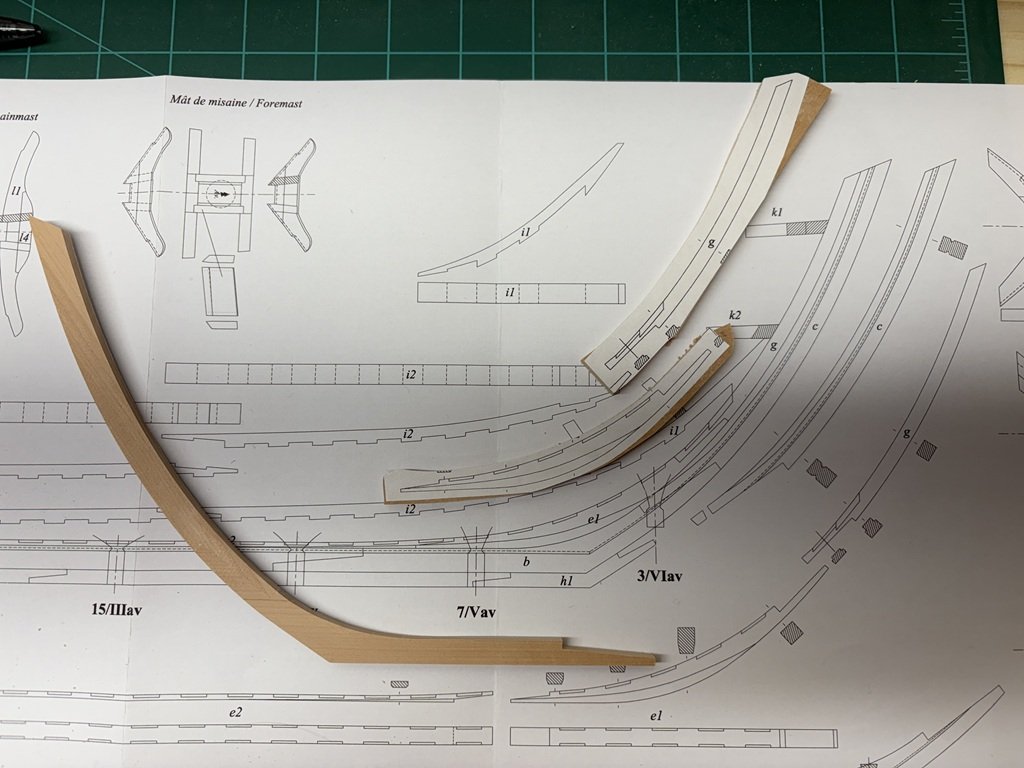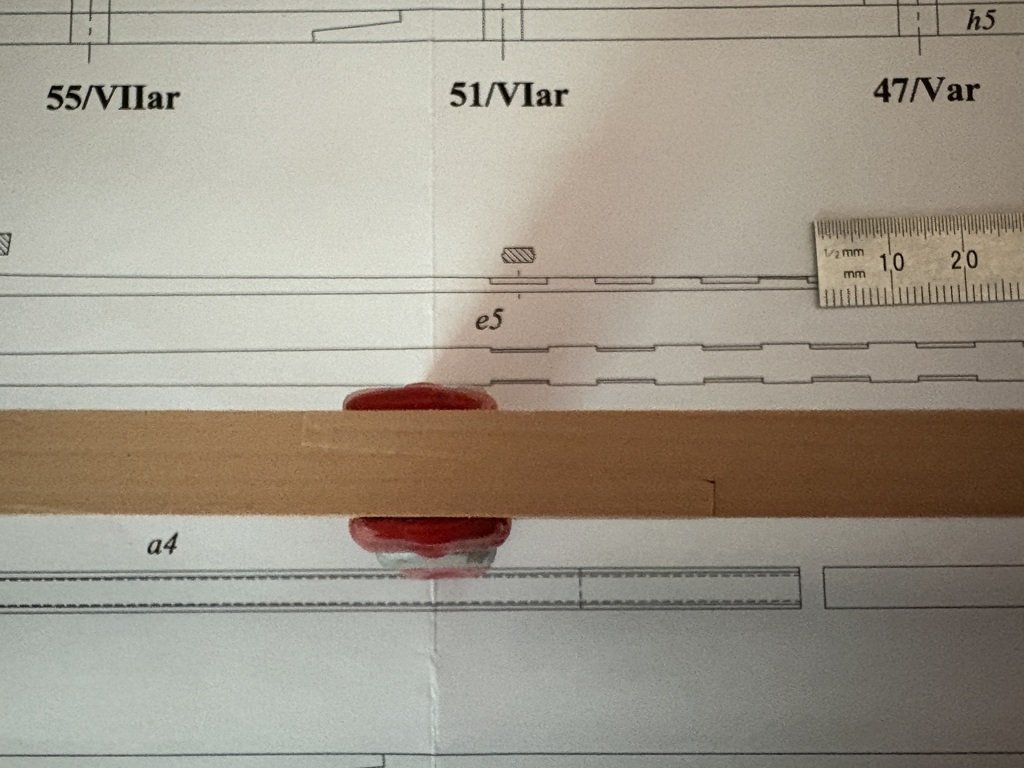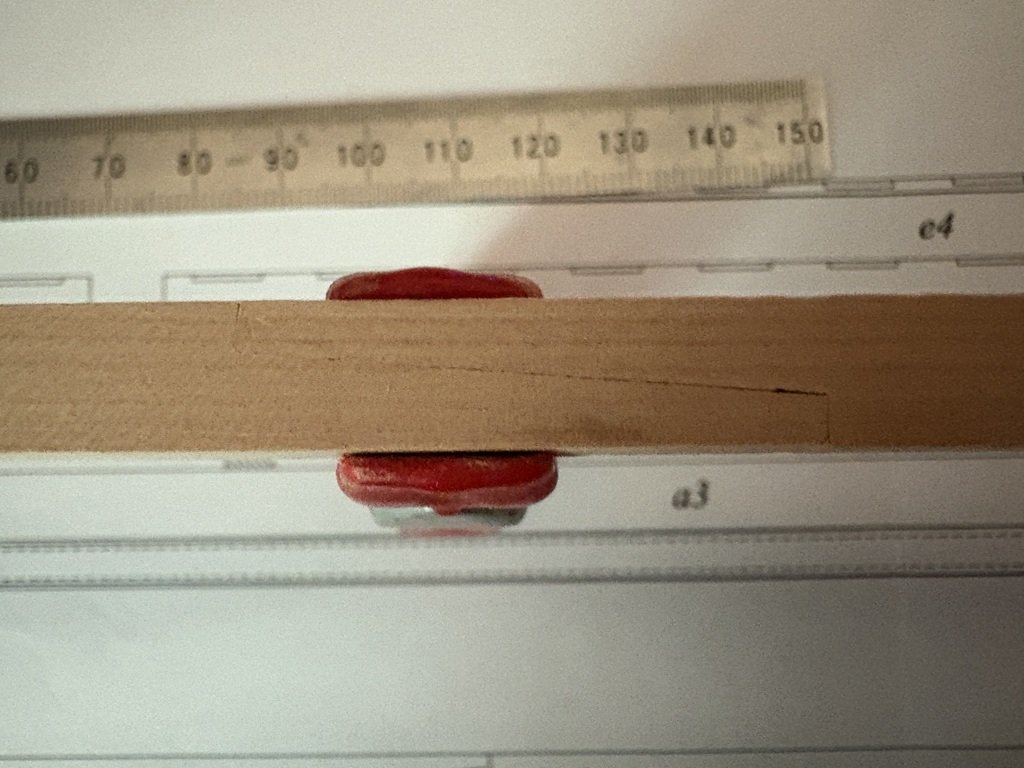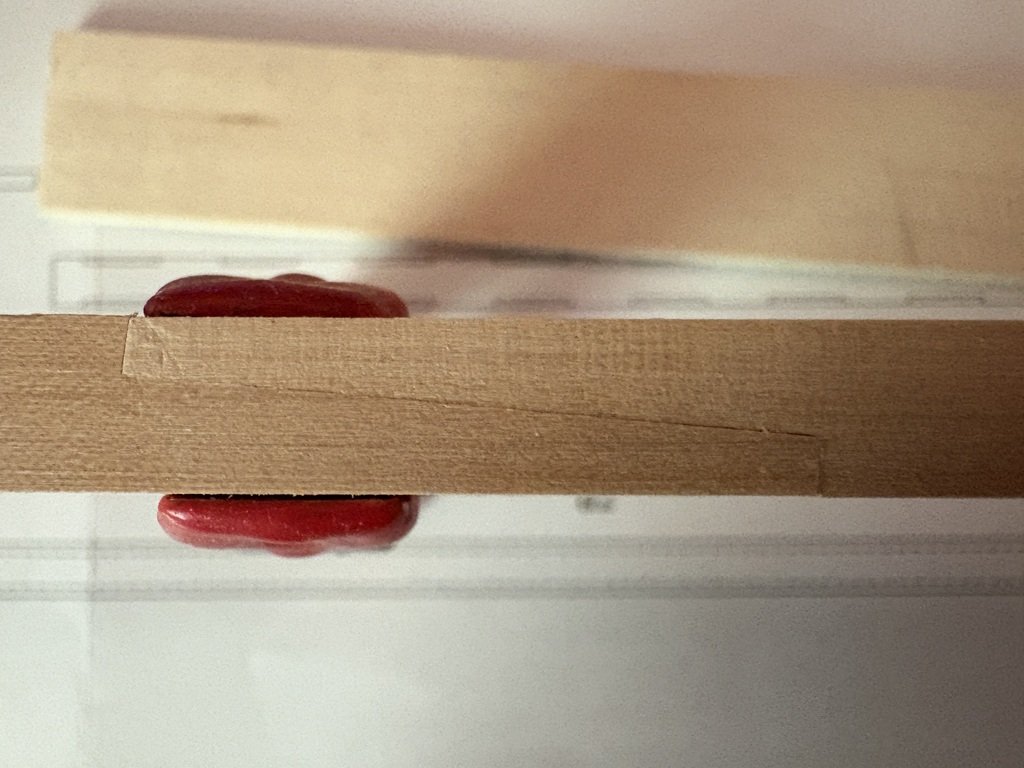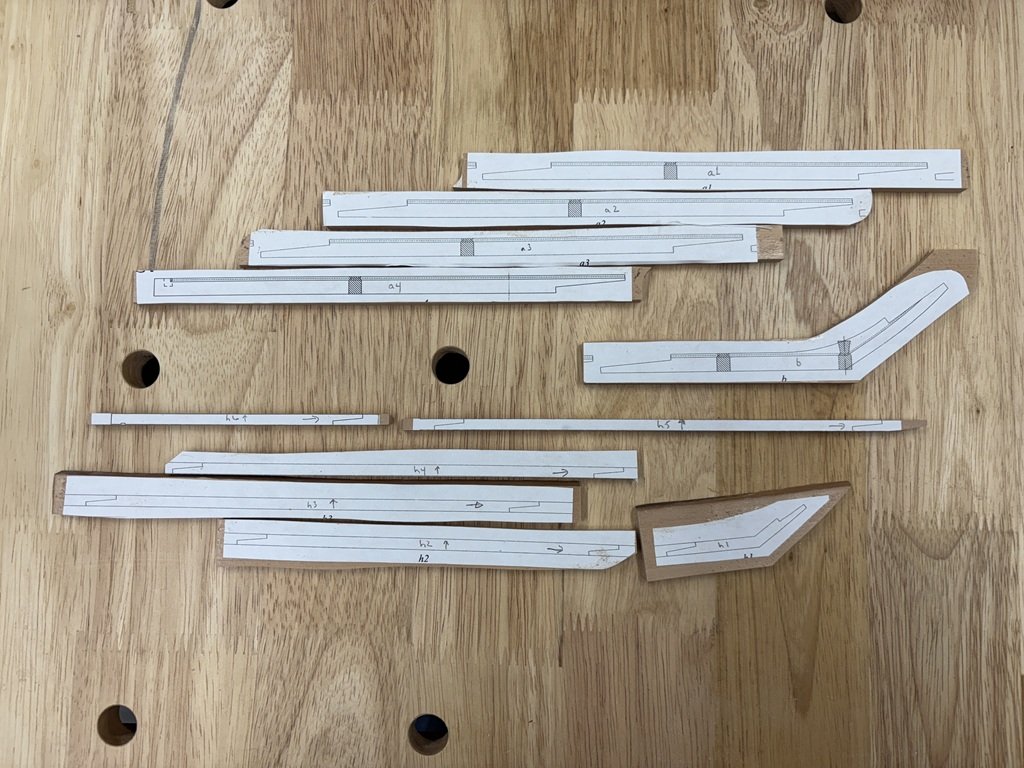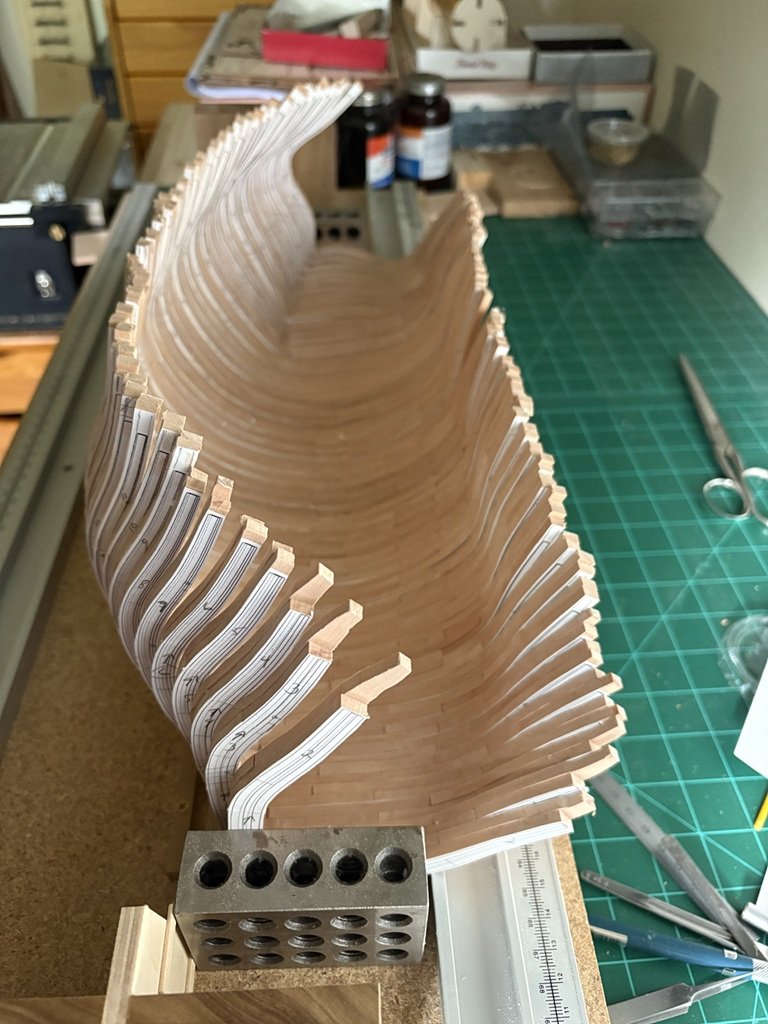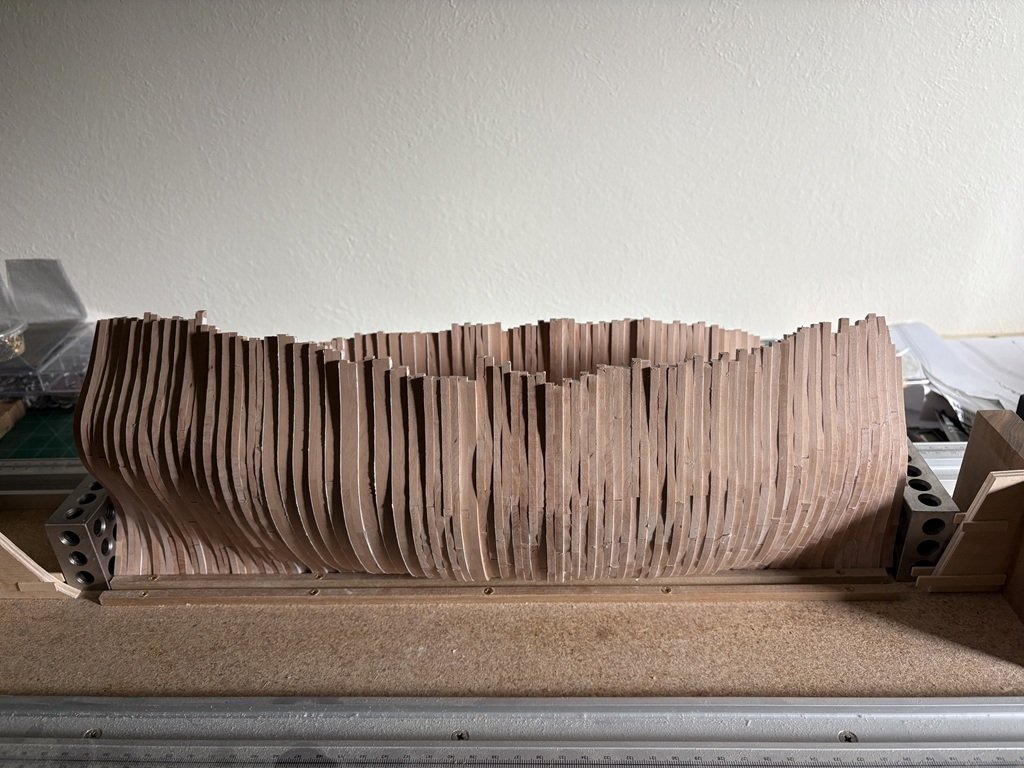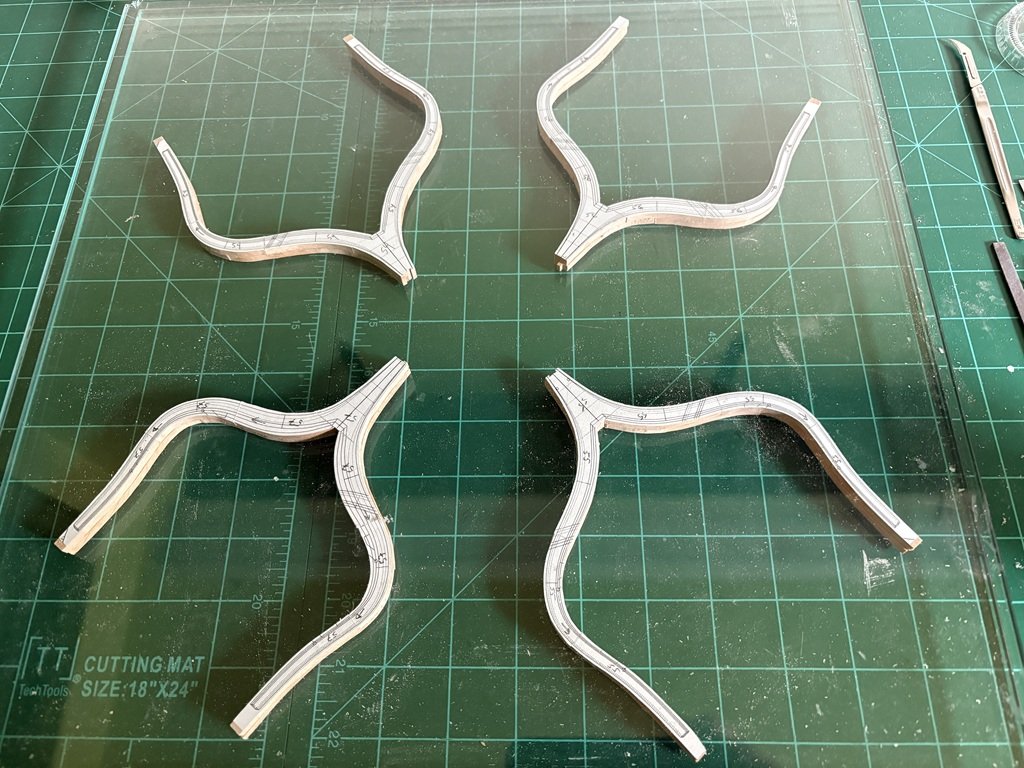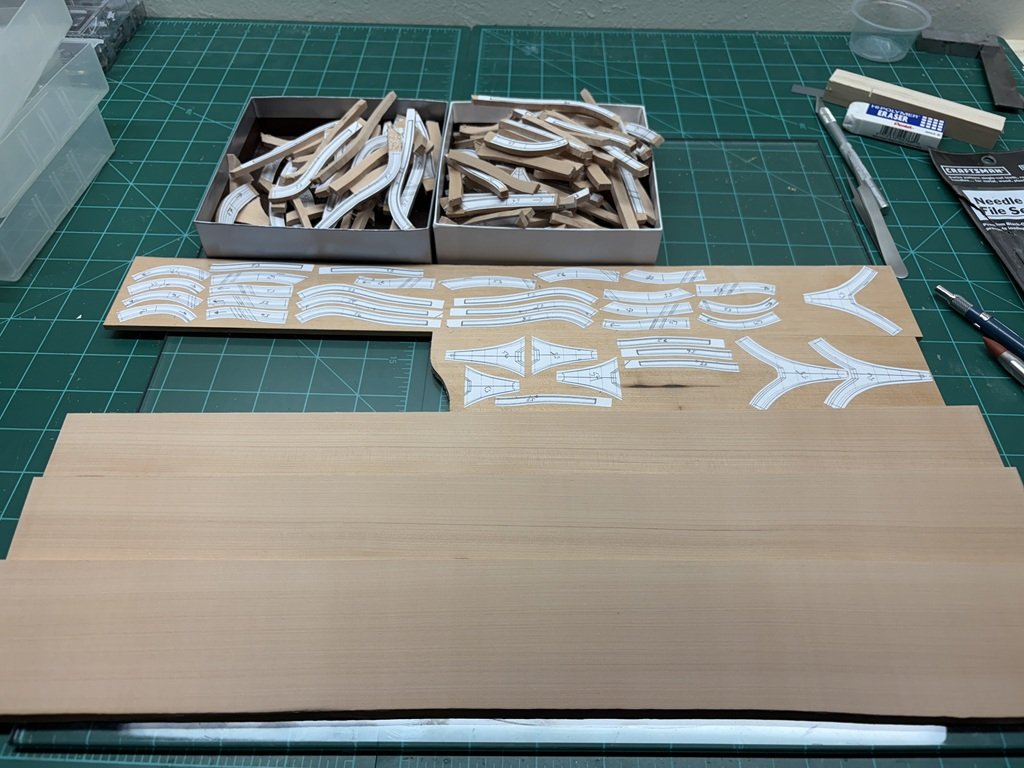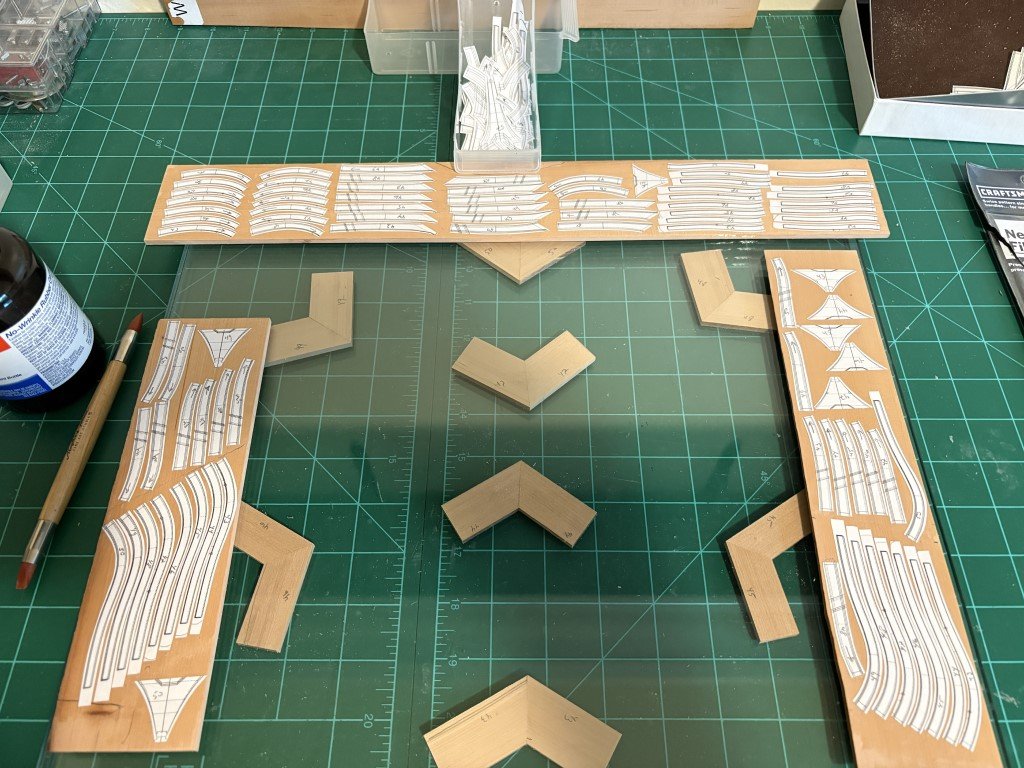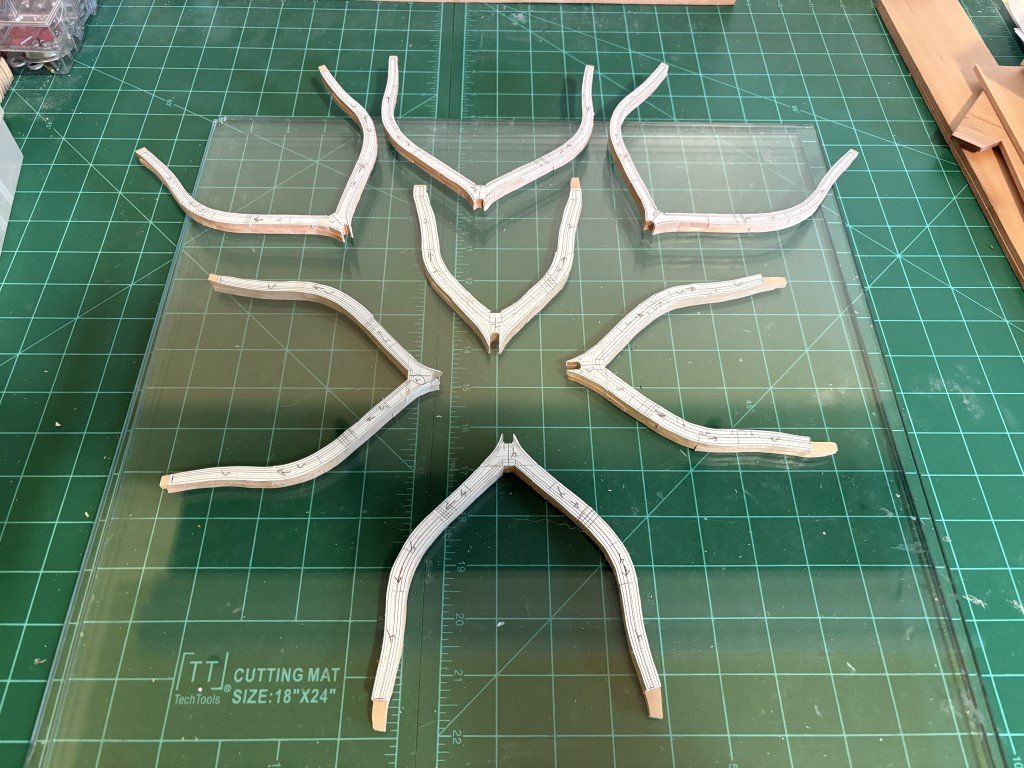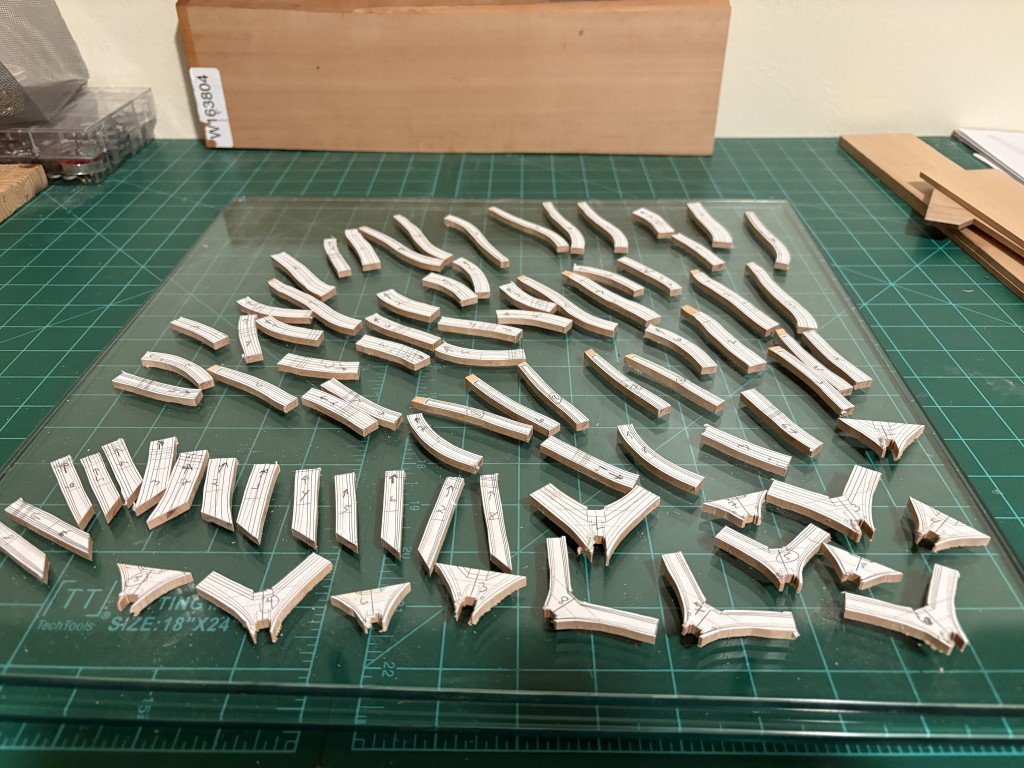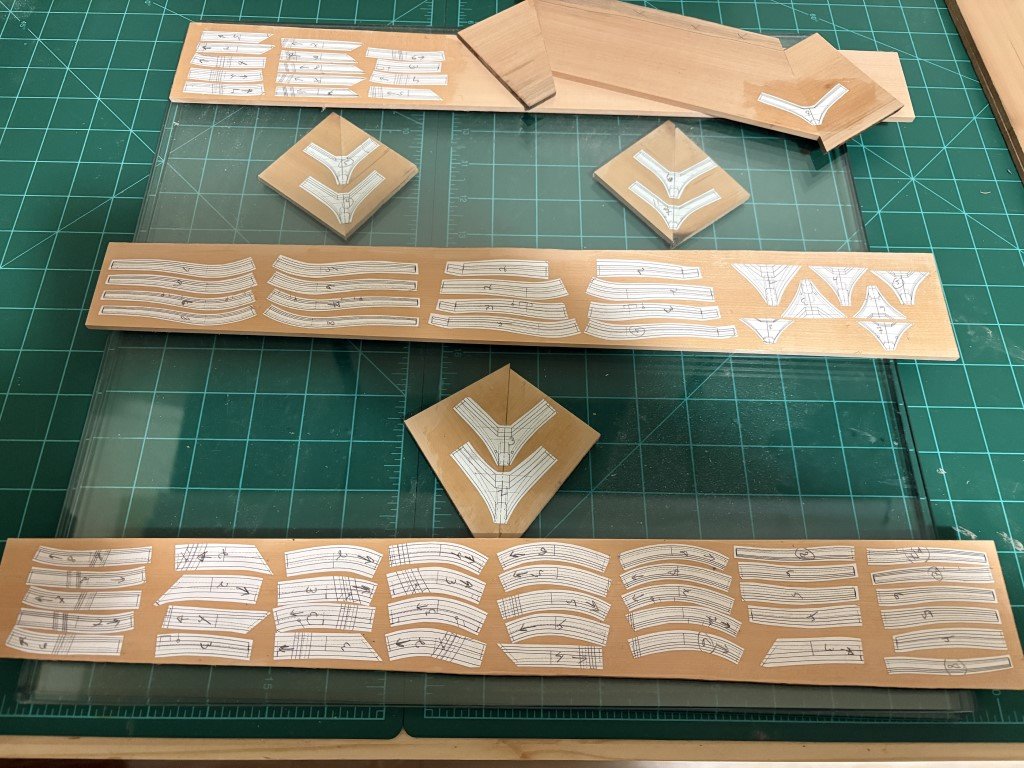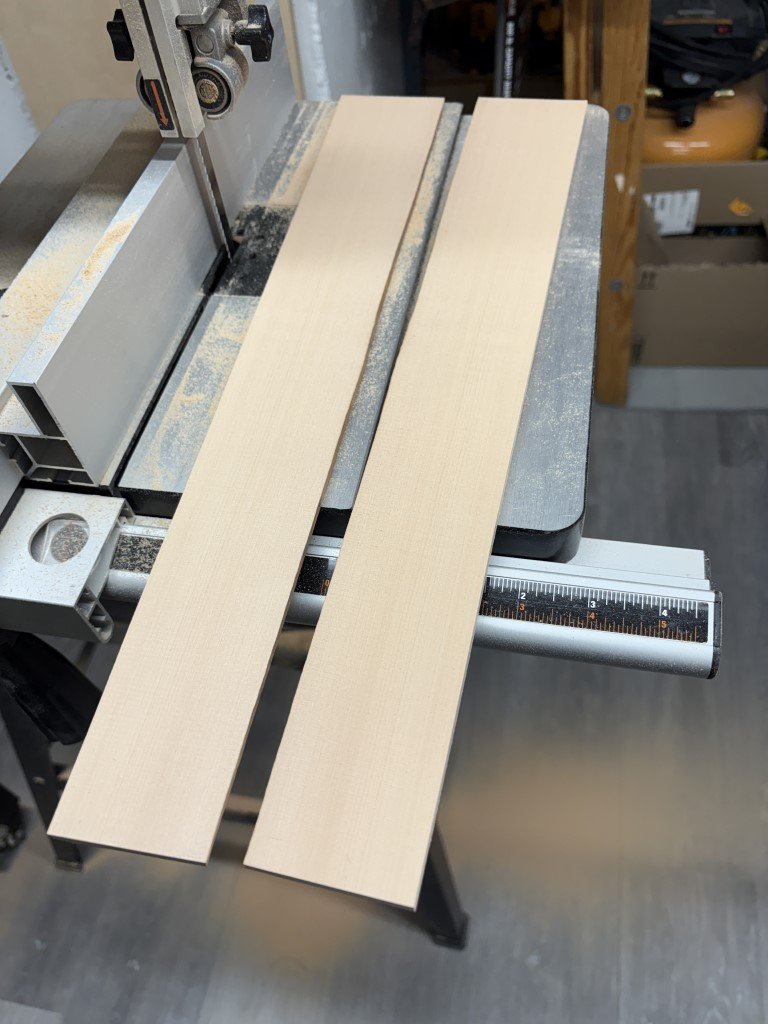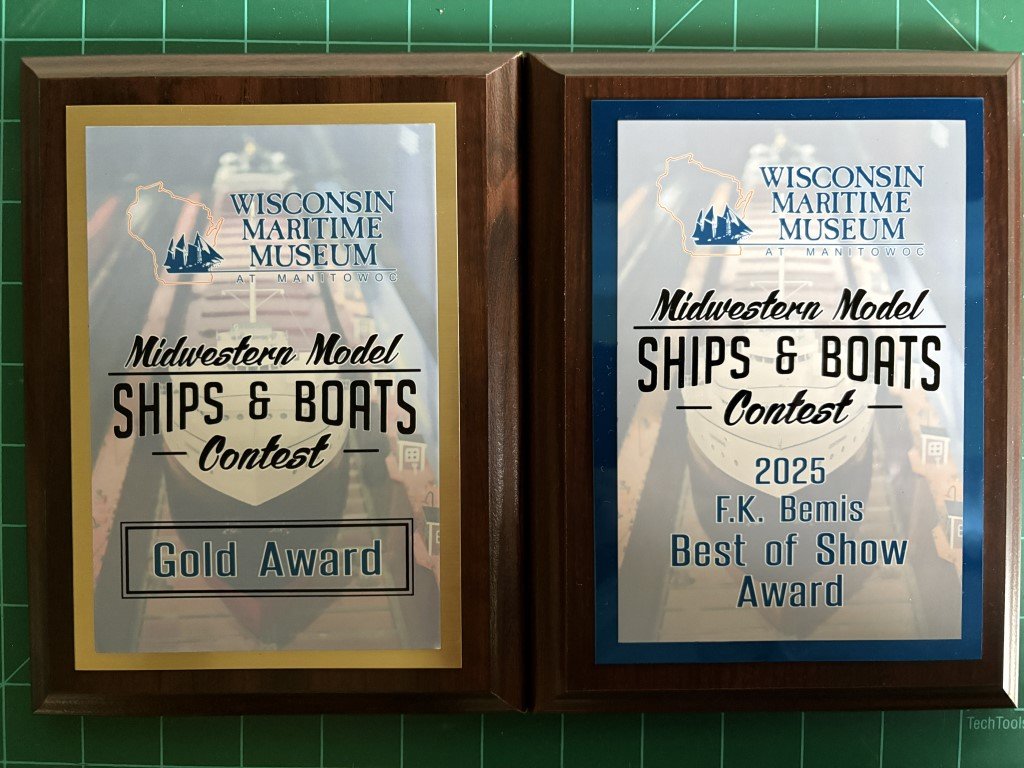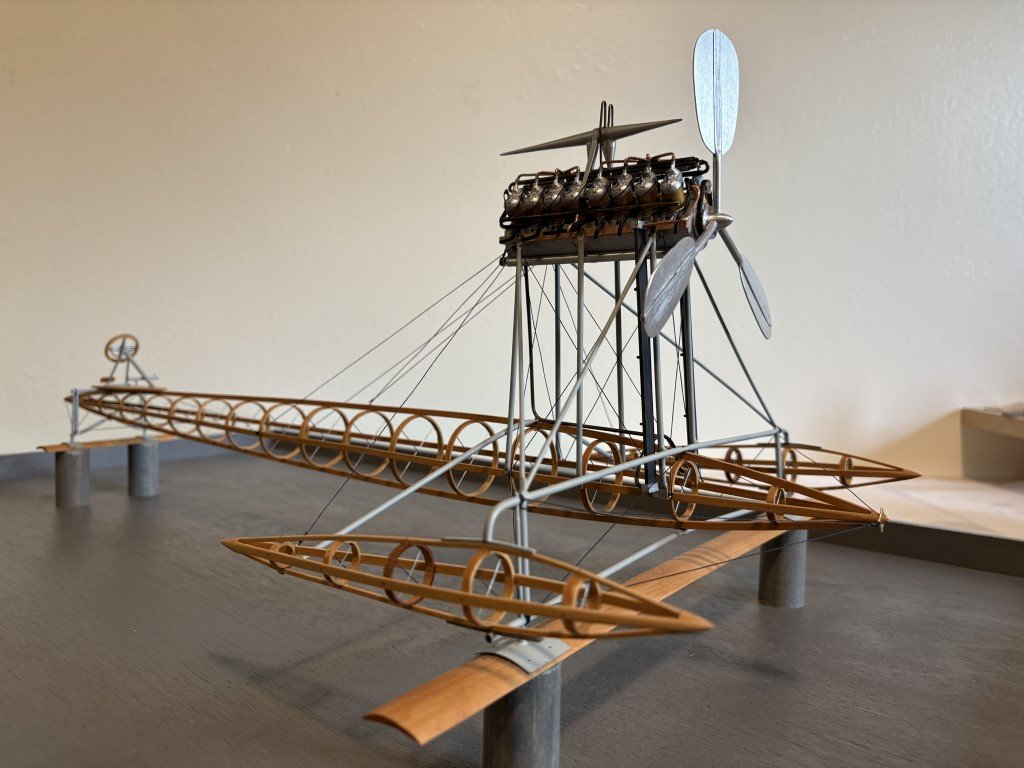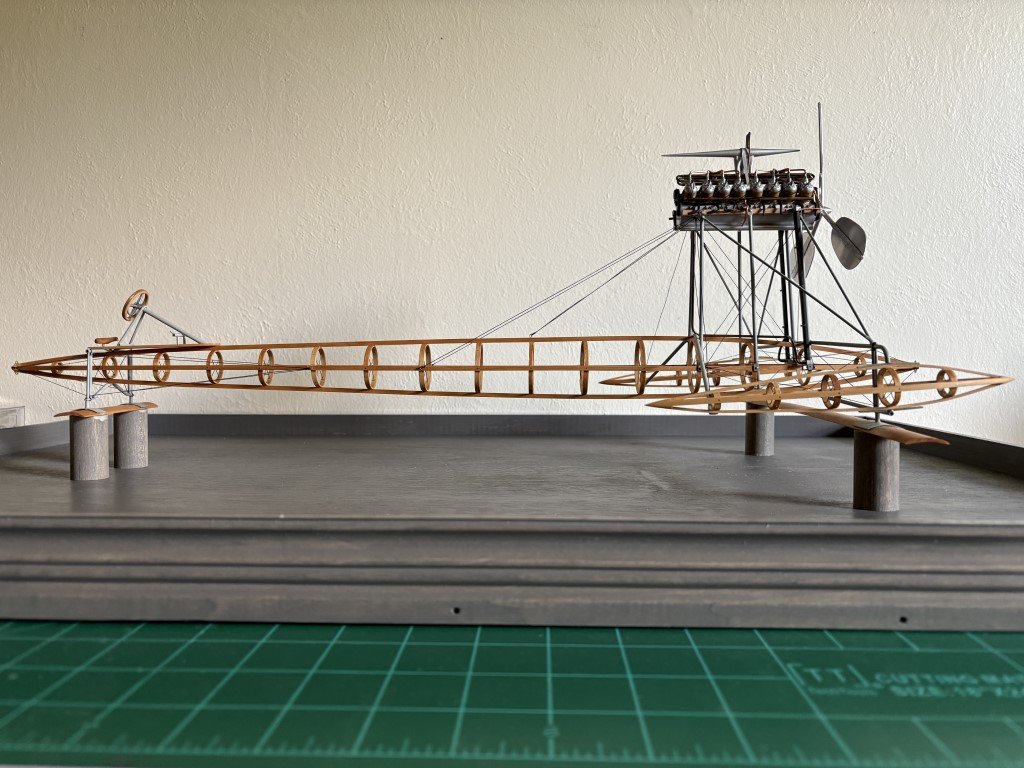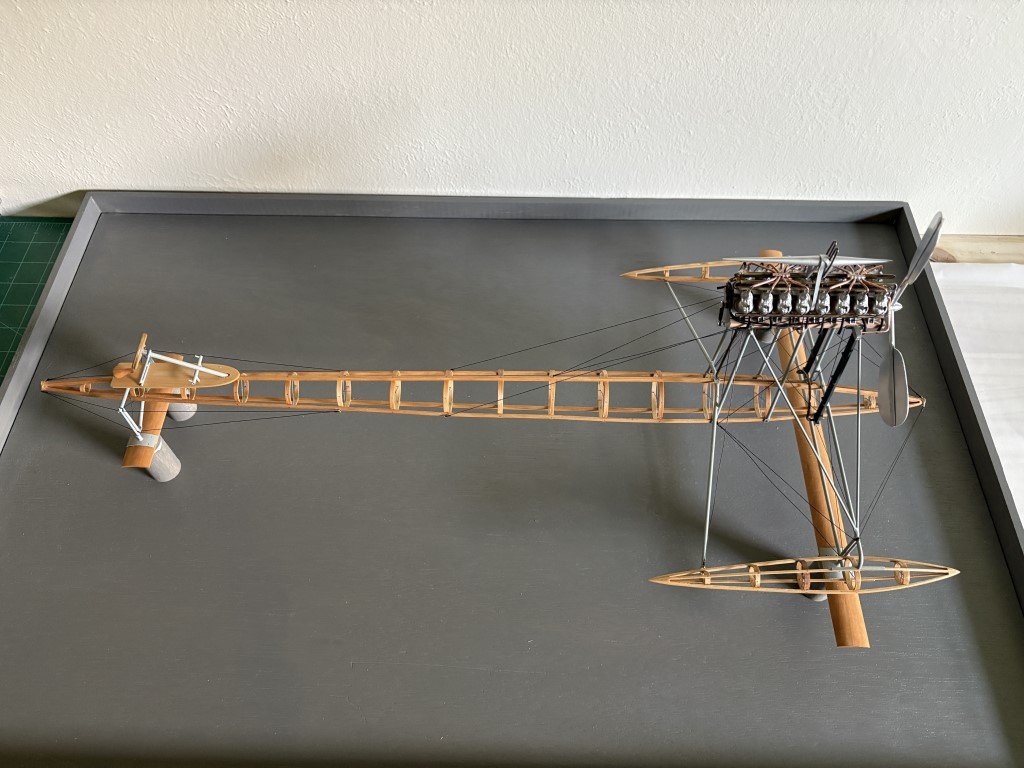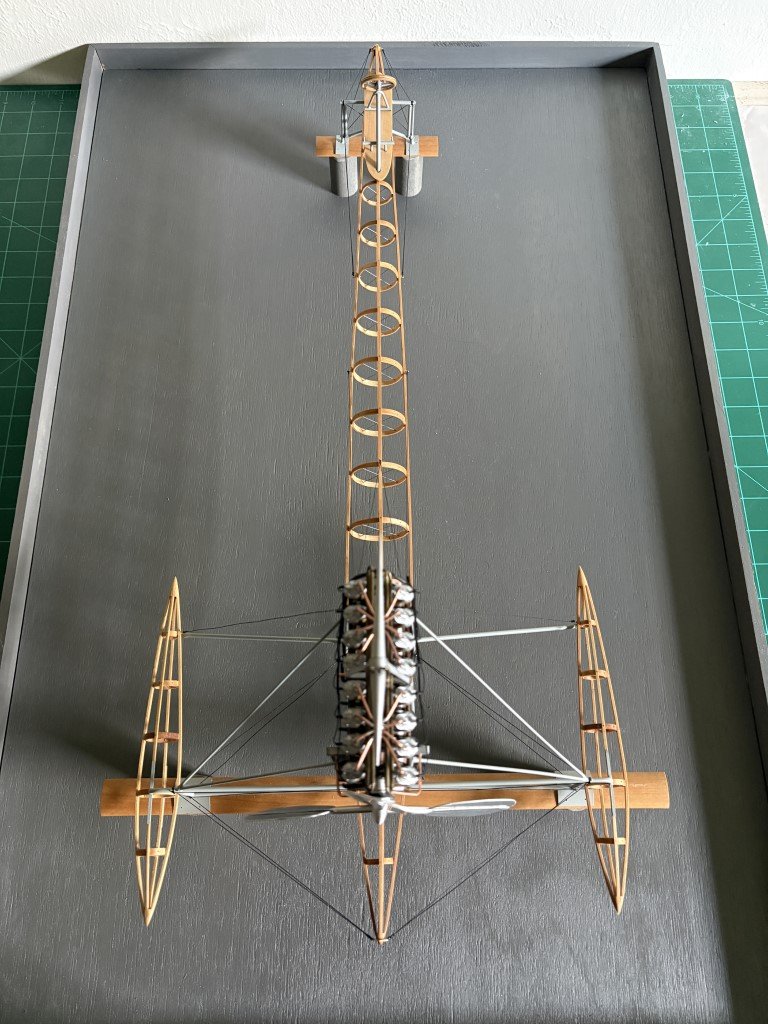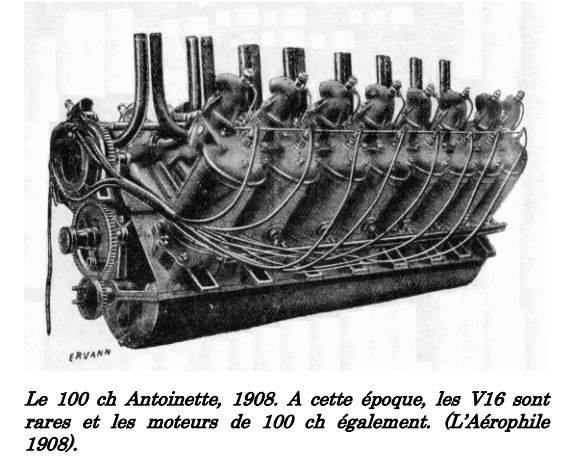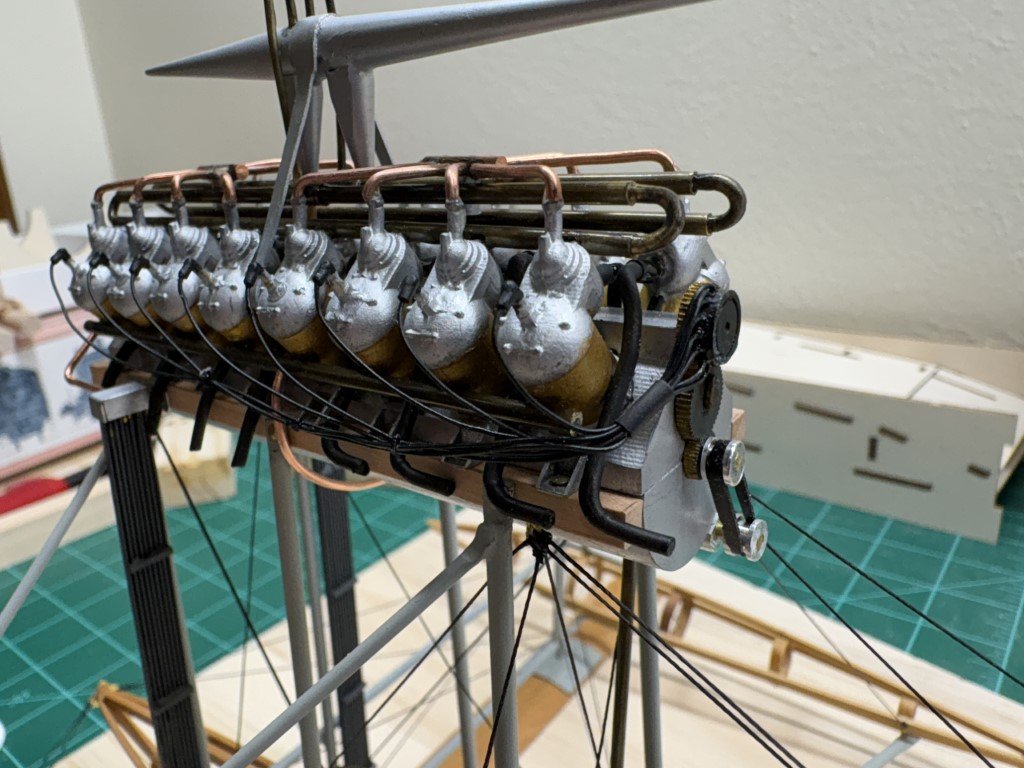-
Posts
718 -
Joined
-
Last visited
Content Type
Profiles
Forums
Gallery
Events
Everything posted by Greg Davis
-
All points well taken - expanding / contracting plans and wood, together with the fact lines on a drawing have width. I won't be adding any paper for caulking and yes, glue does take up space. I hope to keep a good eye on the accumulated length / minimize the chance for expansion by keeping track of not just the dimensions of each individual part, but also that of assemblies. So here, the combined width of the apron / stem is as important as the width of the apron and stem individually. Of course finishing individual parts to the exterior the associated plan lines will result in joined pieces to include the thickness of two copies of the lines from the plan plus space taken by glue - so one line width plus glue too much. Finishing individual pieces to where the plan line nearly disappears (on both sides of a joint) keeps the joined combined piece(s) dimensions closer to what the goal is. Either way, assume if one had modeled a keel to be 850mm and ended up 0.5mm in excess of the overall keel length, the length for this assembly l will still be within 0.06% of the desired length [ (0.5 / 850) x 100 = 0.06% ] - for me, I'd call that a win!
-
I milled the scarf joining the apron and rising wood segment, then glued the pieces together and set them under glass for more than a day. My plan is to shape the fore side of the subassembly so it matches with the previously made section. Then I will shape the inner side followed by milling the more delicate scarf on the end of the rising wood piece.
-
Just a quick update: It's taken a few days but the fore-foot (b) and stem (c) are connected, shaped and ready to accept the apron (g) as well as the first section of the rising wood (e1). I expect that it will take quite a few more hours of careful shaping to get g and e1 nicely fayed to b and c. The fore-foot (h1) already is shaped to fit correctly to b (and to the next part of the false keel h2).
-
Fortunately we keep our house fairly well controlled in terms of temperature and humidity so I'm hoping that there is minimal dimensional changes going on here! For this project I will make use of the dimensions listed in the monograph as well as the plans. I had read about your use of Mylar in your books and it may be wise for me to think in this direction for future projects. This certainly seems to be a situation where it would be valuable to have CAD files which don't appear to be available for ANCRE publications. But I do have a project in the wings that needs to be done in the next couple of years for a local non-profit. They want I model of a Mackinaw boat and I have agreed to make one for them. Still not sure what draught I will work from, but it appears that I will need to draw the plans myself - it could be a good introduction for me for working with Mylar. I am very much looking forward to seeing the result of your current project; South Carolina (ex L'Indien?) is such a beautiful frigate! Greg
-
Before refining the joints, the accumulated error in length of the keel was nearly 2mm over the ~80mm unit. After working more on the joints, I've reduced this to less than 0.5 mm; so I'm now within 0.6% of the plans. I concerned that if I go further, I may end up being off by more in the negative side / am I already in the area of contraction / expansion of the paper plans - what to do now? Here's what the 4 scarf joints that link the 5 pieces of the keel from fore to aft: Next up some work on the false keel joints
-
Most of the parts for frames 43- 50 are ready to cut out. Blanks for the two part floors are between glass plates drying flat. Photocopied patterns for all the parts for frames 51 - 57 are in the plastic tray ready to be rubber cemented to wood. I feel I'm getting rather proficient with the frame assembly line! Looks like I also need to prepare a bit more 4mm thick material for the last 7 full frames - not going to make it with what I've already milled.
-
Good deal of time at the scroll saw, followed by trimming ends on the Byrnes table saw, and milling of the slots for attaching to keel. So now I have a 'kit' for frames 2 - 8 to assemble! I think 3 or 4 frames fit between my glass sheets for drying, so 2 - 3 days of work with these. Simultaneously, I can start building a kit for Type C frames 43 - 57. After that, it looks like I better get at the keel structure and make a building board / cradle for L' Invention. I am really looking forward to seeing the frames standing up in order giving a first impression of the hull shape!
-
I know it has been quite a while - much longer than expected! The 'quick diversion' of building the Santos-Dumont 14bis turned into researching and building a model of the Santos-Dumont No 18 Hydroplane. But that is done and today I got out the Swiss Pear and started to mill enough wood to finish the remaining frames. Looking forward to making frames and then a keel structure to place them on!
-
First, I want to say thank you to everyone that spent time following this build and an especially big thanks for all that provided me with their views and information that I would not have otherwise been knowledgeable of. Second, I have gotten back home from an enjoyable couple of days at the 48th Midwestern Model Ship and Boat Competition. This morning, I was quite satisfied to see the model had earned a gold award in the advanced category; but later in the day, things got even better when it was announced that the Santos-Dumont No 18 Hydroplane had been judged as Best of Show!
- 288 replies
-
- Santos Dumont No. 18
- hydroplane
-
(and 1 more)
Tagged with:
-
The model mounted on a display board now. I'm not sure I will add more to the model at this point; however, if 'new' information appears I am not opposed to modifying what has been done to this point. Friday the Santos-Dumont No 18 hydroplane will get a ride to the 48th Annual Midwestern Model Ship and Boat Contest. Very interested in what kind of feedback I will receive - hope it is liked!
- 288 replies
-
- Santos Dumont No. 18
- hydroplane
-
(and 1 more)
Tagged with:
-
All ignition wires are in place and I believe I have done what I can wrt the engine. All the woodwork for the case has been completed. Staining / finishing and then model installation followed by a couple of final details; however, for the most part I think I'm close to a finished (for now) situation.
- 288 replies
-
- Santos Dumont No. 18
- hydroplane
-
(and 1 more)
Tagged with:
-
As I went to the other side, more boots went missing so I ordered more as a safety measure - it must of worked because a got 16 in place and have one left over before receiving the extras! I've wired one side based on the following picture: Here's the result: Time to turn the boat around and complete the wiring.
- 288 replies
-
- Santos Dumont No. 18
- hydroplane
-
(and 1 more)
Tagged with:
About us
Modelshipworld - Advancing Ship Modeling through Research
SSL Secured
Your security is important for us so this Website is SSL-Secured
NRG Mailing Address
Nautical Research Guild
237 South Lincoln Street
Westmont IL, 60559-1917
Model Ship World ® and the MSW logo are Registered Trademarks, and belong to the Nautical Research Guild (United States Patent and Trademark Office: No. 6,929,264 & No. 6,929,274, registered Dec. 20, 2022)
Helpful Links
About the NRG
If you enjoy building ship models that are historically accurate as well as beautiful, then The Nautical Research Guild (NRG) is just right for you.
The Guild is a non-profit educational organization whose mission is to “Advance Ship Modeling Through Research”. We provide support to our members in their efforts to raise the quality of their model ships.
The Nautical Research Guild has published our world-renowned quarterly magazine, The Nautical Research Journal, since 1955. The pages of the Journal are full of articles by accomplished ship modelers who show you how they create those exquisite details on their models, and by maritime historians who show you the correct details to build. The Journal is available in both print and digital editions. Go to the NRG web site (www.thenrg.org) to download a complimentary digital copy of the Journal. The NRG also publishes plan sets, books and compilations of back issues of the Journal and the former Ships in Scale and Model Ship Builder magazines.


